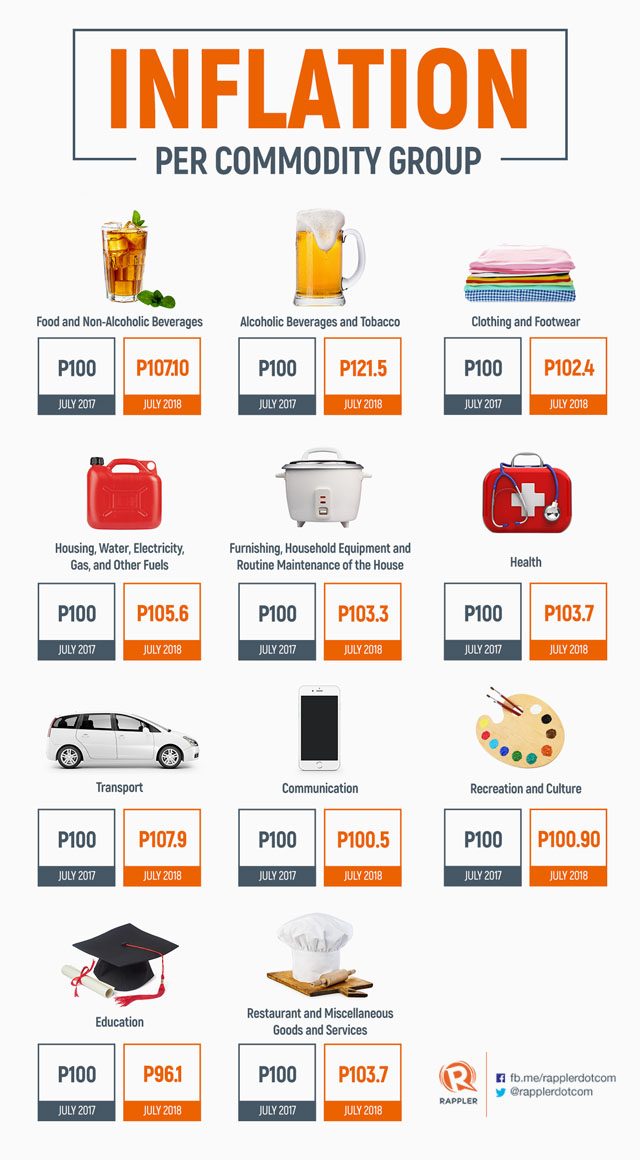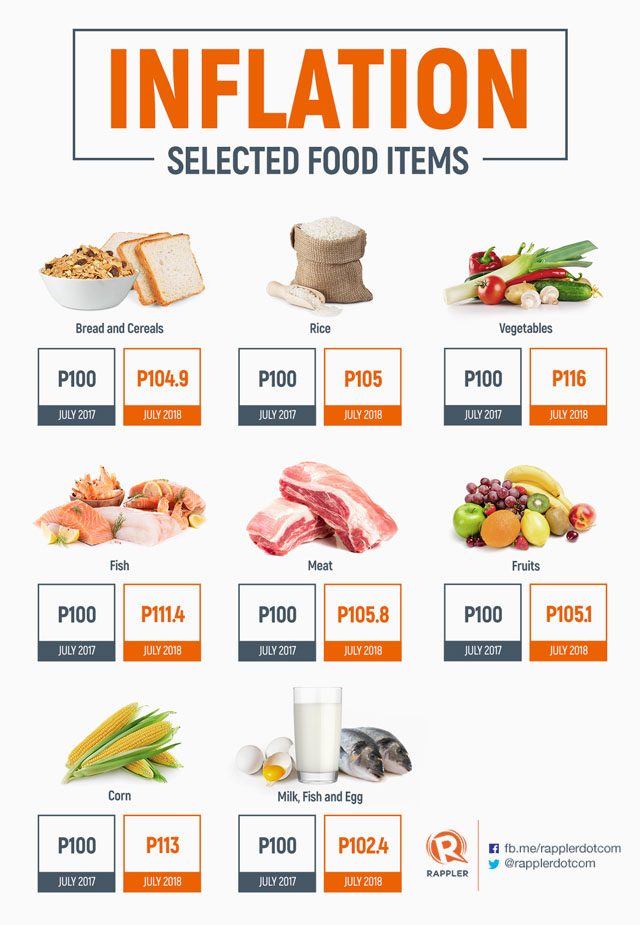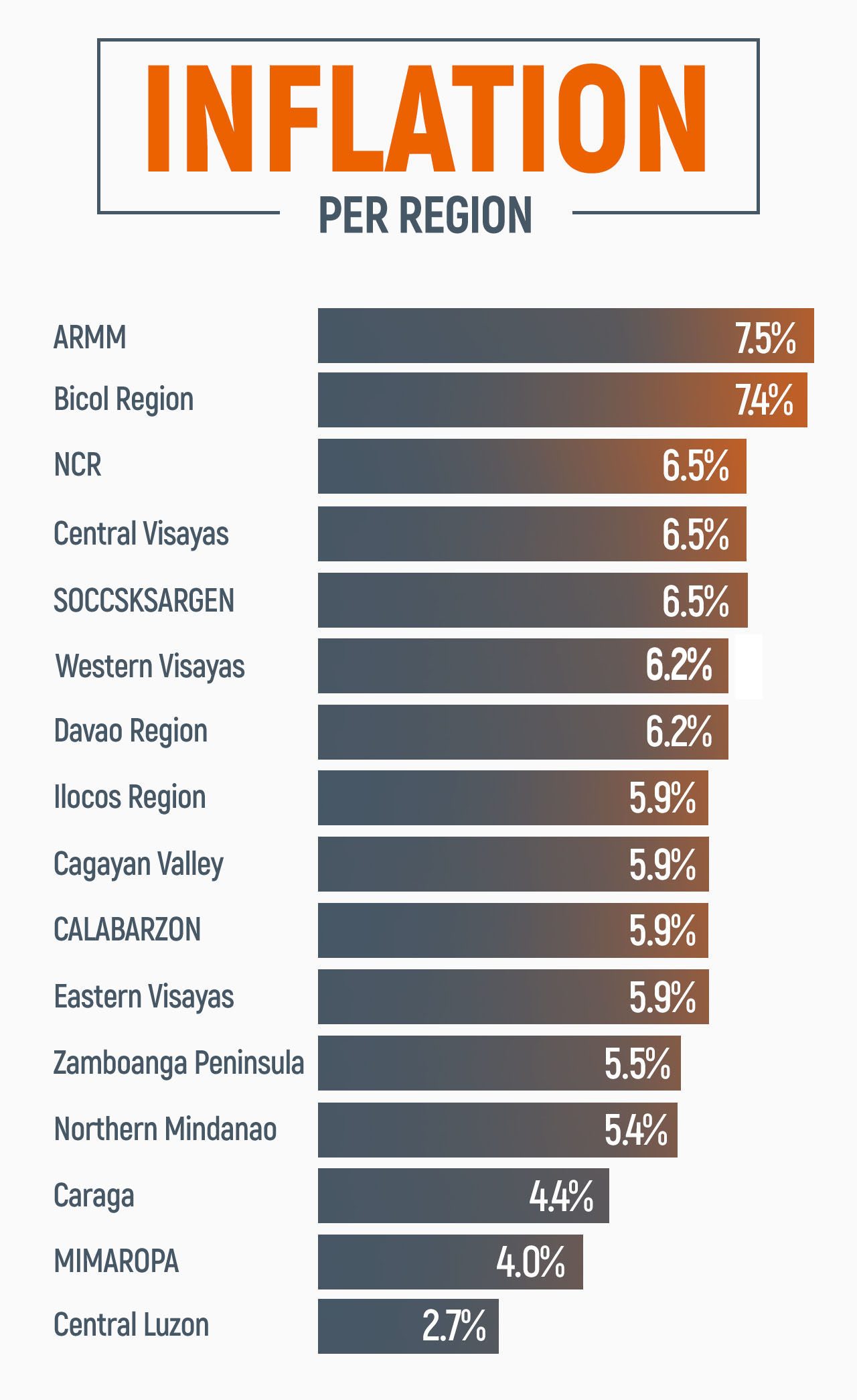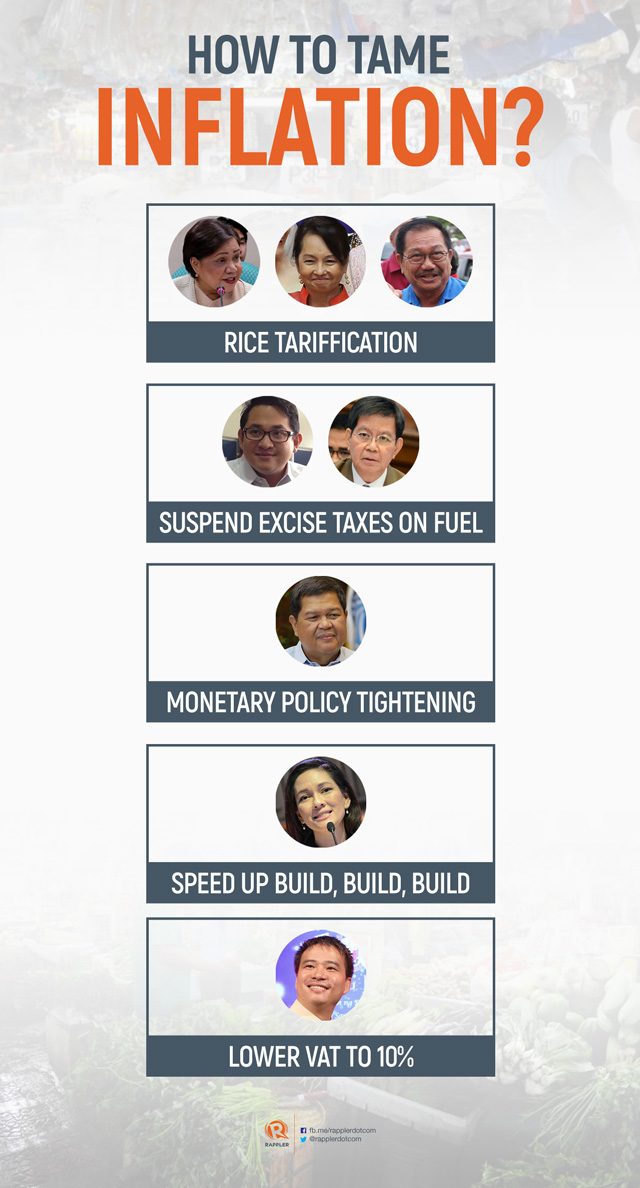SUMMARY
This is AI generated summarization, which may have errors. For context, always refer to the full article.

MANILA, Philippines – July 2018 inflation reached another fresh high of 5.7%. For you to buy goods, you need to put out a little more cash.
The Department of Finance (DOF) said inflation has yet to peak around August or September this year before it goes down between 2% and 4% in 2019.
As Socioeconomic Planning Secretary Ernesto Pernia said, we may need to “tighten our belts” a little more.
It gets worse when we drill down per commodity group.
Using P100 as an example, Rappler illustrates the movement of prices of goods in July 2018 compared to the same period in 2017.

Prices of alcoholic beverages and tobacco soared to 21.5% due to the implementation of higher taxes.
Food and non-alcoholic beverages (7.1%) and utility bills and fuel (5.6%) and transportation (7.9%) also jumped in July.
Interestingly, educational expenses (-3.9%) got cheaper.
The same cannot be said of basic food items, like vegetables and rice.

Vegetable prices registered a 16% inflation rate in July. Meanwhile, rice imports failed to bring down the price of rice (5%) in the local market.
Prices of corn (13%) and fish (11.4%) also spiked.
Inflation was also felt differently per region. Some regions suffered more, while some enjoyed a desirable rate.
The Autonomous Region in Muslim Mindanao, one of the poorest regions in the country, was hit with a 7.5% inflation rate. The Bicol region came in second at 7.4%.
Inflation in the National Capital Region (NCR), Central Visayas, and Soccsksargen clocked in at 6.5%.
Central Luzon experienced the lowest inflation rate at only 2.7%. The region also reported a surplus in rice prices.

Social mitigating measures were supposed to be in place amid the implementation of the Tax Reform for Acceleration and Inclusion (Train) Law this year. However, government agencies admitted that implementation was slow.
Policy makers suggested several solutions to tame inflation.

– Rappler.com
Add a comment
How does this make you feel?
There are no comments yet. Add your comment to start the conversation.